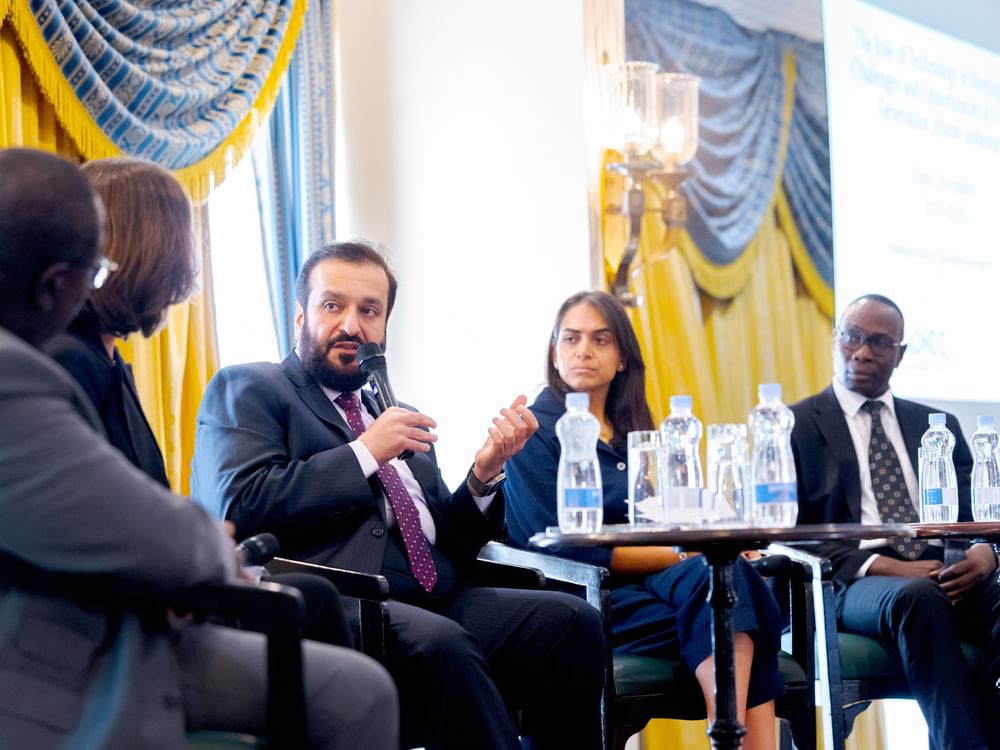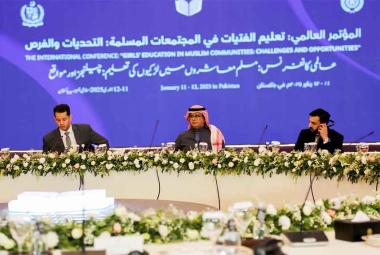NAIROBI, 1st March, 2024 (WAM) -- The Emirates News Agency (WAM), strategic partner of the Global Media Congress (GMC), today launched the event's annual White Paper on the trends, challenges and opportunities of the global media industry at an exclusive event in Nairobi, Kenya.
The launch event convened media leaders, government officials, academics, influencers and other figures from across the industry and beyond around the theme of 'Decisive Leadership in an Increasingly Complex Media Landscape'.
Advancing the core themes of the White Paper, i.e. changing audience behaviour, the role of technology, sports & environmental journalism and more, the event convened a panel discussion focusing on the role of these subjects within the Kenyan and wider African media landscape.
The dynamic panel discussion featured Mohamed Jalal Alrayssi, Director-General of WAM; Ochieng Rapuro, Editor-in-Chief at the Standard Media Group; Kanika Saigal, Business Editor at the Africa Report, and Joseph Odindo, Senior Lecturer at the Aga Khan School of Media, University Graduate School of Media and Communication. The conversation was moderated by Davina Leonard, a Nairobi-based writer, actor and film producer.
The stimulating discussion attended to the most pressing issues facing the media in Kenya and beyond, with a particular focus on the challenges and opportunities presented by technology - in all its forms.
Joseph Odindo stressed the importance of digital literacy when training junior journalists, noting, "There is a need for university curricula review, to bring it up to date with new technologies".
Indeed, much of the conversation centred on the role of AI, with Ochieng Rapuro arguing that the training of AI tools is critical in their use in regional journalism, saying, "Most AI tools available are trained with material outside Africa and outside Kenya. We must highlight the need to localise AI for our domestic audiences".
His remarks were echoed by Alrayssi, who went further to make the case for protecting journalists in the process of incorporating new technologies, stressing the importance of global cooperation, "We have to work together internationally to enact laws and regulations to protect our copyrights as a journalists".
The publication of the White Paper follows the conclusion of the second edition of the GMC in Abu Dhabi last November. Organised by the ADNEC Group, with WAM as its strategic partner, this internationally acclaimed event for the media industry gathered 24,000 experts and visitors over three days to address the most pressing issues facing the global media industry.
A key feature of the Global Media Congress is the Media Future Labs, a series of frank and open roundtable debates led by those shaping the future of the media industry. The White Paper is a product of those discussions, addressing fundamental questions regarding the future of the media industry.
Core themes included the role of print journalism, the impact of Artificial Intelligence on the industry, the increasing role of data in informing media practices, environmental journalism, and the changing nature of sports media. The paper addressed these areas, in addition to four expert insights from media practitioners and analysts from across the world.
WAM Director-General said, "The media industry is undergoing rapid change – change which demands decisive leadership. In this White Paper, we explore those decisions that media leaders need to make – like whether it be to incorporate AI into their operations or not – decisions which inevitably may have profound consequences. What is clear however, both from the panel today and the discussions at the Global Media Congress – is that the media is fundamentally hopeful about the future. Of course, there are challenges ahead, but it's deeply encouraging to see how passionate media leaders are about crafting the sustainable media industry of the future, in Kenya and beyond".
The White Paper's eight chapters are as follows:
First: "AI in the Media: A Sea-Change or Another Wave in the Tide of Innovation?" explored the role of artificial intelligence in newsrooms. It emphasised the AI's ability to halt the slow decline of traditional media outlets, despite existing existential risks. It also addressed growing concerns about job loss and the ability of AI to support smaller news organisations to grow and inspire a greater diversity of news.
Second: "The Revival of Print Journalism?" addressed the phenomenon of "News fatigue", or "Media fatigue" as it presents an existential risk to print journalism due to excessive exposure to news content, especially controversial topics. It highlighted the risks this phenomenon poses to journalism, such as increasing apathy towards issues raised, weakening trust in media institutions, and the growing difficulty in distinguishing facts from misleading information.
Nevertheless, this chapter shows growing optimism about the possibility of reviving print media as the industry looks to innovate new approaches that blend the best aspects of its heritage with the contemporary audience's expectations regarding the quality and authenticity of news.
Third: "A New Way of Understanding Audiences" asserted that the world is witnessing fast-changing characteristics of news consumers, with a radical shift to video-based content like TikTok and YouTube. This poses new challenges for the media industry while opening up broad prospects for innovating new ways to interact with the audience.
Fourth: "Leveraging the Power of Women's Sports on and off the Field" examined the rising importance of digital platforms and their impact on the work of female sports journalists. Traditional barriers for marginalised individuals, especially women, are slowly eroding, resulting in positive outcomes such as increased revenues in women's sports and viewership, as well as a general interest in women's achievements in sports.
It concluded that there is a real opportunity for female sports journalists to focus on solutions and tools that can enhance the relationship between women athletes and the audience.
Fifth: "The Role of Technology in Driving Sports Audience Engagement" underscored the transformative impact of technology on modern sports reporting.
These new technologies have brought about significant transformations in modern sports journalism. Analytics, data analysis, and the desire to scrutinise every last detail have become integral parts of contemporary sports reporting. It is predicted that technology will play an increasingly prominent role in sports events in the future and that the lines between technology and the real-life event will begin to blur.
This chapter explored strategies for integrating emerging technologies into sports journalism to cater to diverse audiences effectively. Additionally, it delved into the ethical considerations surrounding the evolving relationship between technology and journalism.
Sixth: "AI and Media Literacy: The New Frontiers of Disinformation" highlighted the profound impact of tools like "ChatGPT" on the media landscape. While artificial intelligence offers benefits, it also introduces challenges, particularly in combating misinformation.
For industry leaders, this represents another signal of the importance of media literacy, both within the media sector and more widely in the public space. It is more vital than ever that journalists are equipped with the tools and critical thinking processes to dissect, assess, and understand mass information flows, but also the general public given the multitude of sources the average news consumer refers to each day.
Seventh: "Environmental Journalism: Bridging the Divide Between Readers and Issues" discussed the critical role of environmental journalism in addressing the impact of climate change. Despite widespread coverage, engaging audiences remains challenging, particularly outside crisis situations.
This section emphasised the responsibility of journalists to convey complex scientific information effectively and promote environmental stewardship. It called for media entities to re-engage audiences by simplifying scientific concepts and shed light on practical solutions to environmental challenges.
Eighth: "Data Journalism: A Powerful Tool – in the Right Hands" examined the growing significance of data in news production. It highlighted the challenges journalists face in translating raw data into compelling stories while maintaining accuracy and impartiality.
This chapter underscored the importance of responsible data translation and interpretation, cautioning against using unreliable or biased data. It also addressed controversies surrounding data journalism and media representation.






